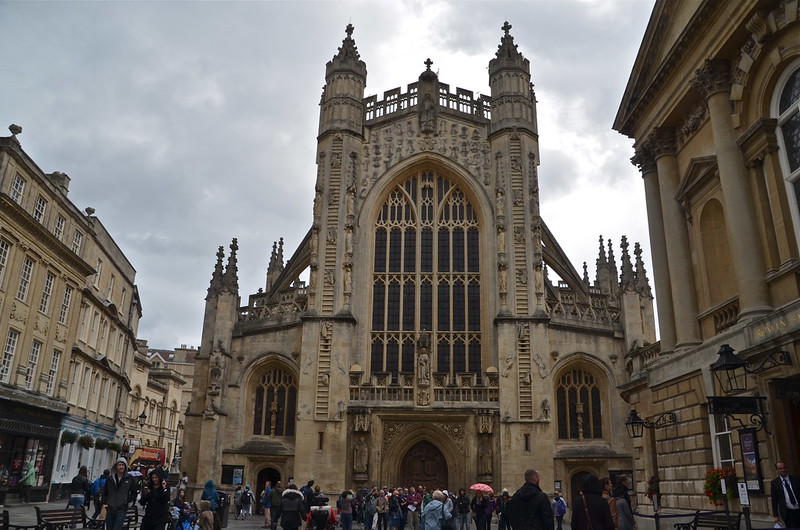
The Abbey Church of Saint Peter and Saint Paul, Bath, commonly known as Bath Abbey, is an Anglican parish church and a former Benedictine monastery in Bath, Somerset, England. Founded in the 7th century, Bath Abbey was reorganised in the 10th century and rebuilt in the 12th and 16th centuries; major restoration work was carried out by Sir George Gilbert Scott in the 1860s. It is one of the largest examples of Perpendicular Gothic architecture in the West Country.
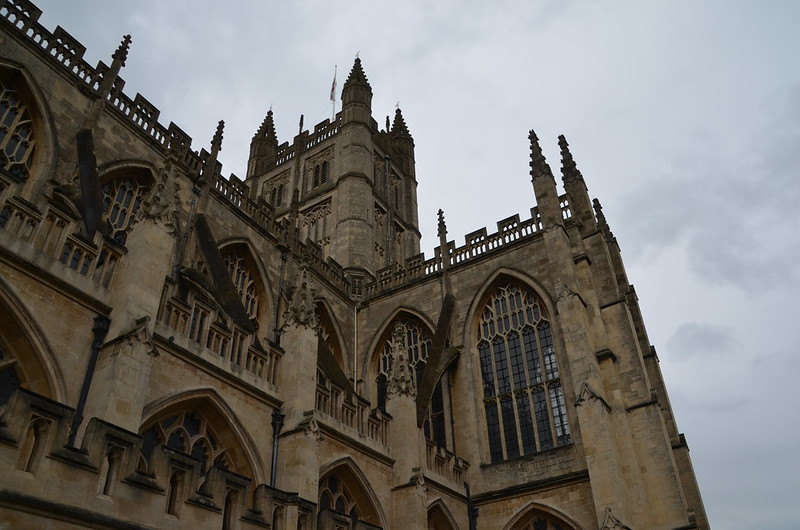
The cruciform abbey is built of Bath stone, which gives the exterior its yellow colour. It is an atypical example of the Perpendicular form of Gothic architecture, with low aisles and nave arcades and a tall clerestory. The walls and roofs are supported by buttresses and surmounted by battlements, pinnacles and pierced parapets, many of which were added by George Manners during his 1830's restorations.
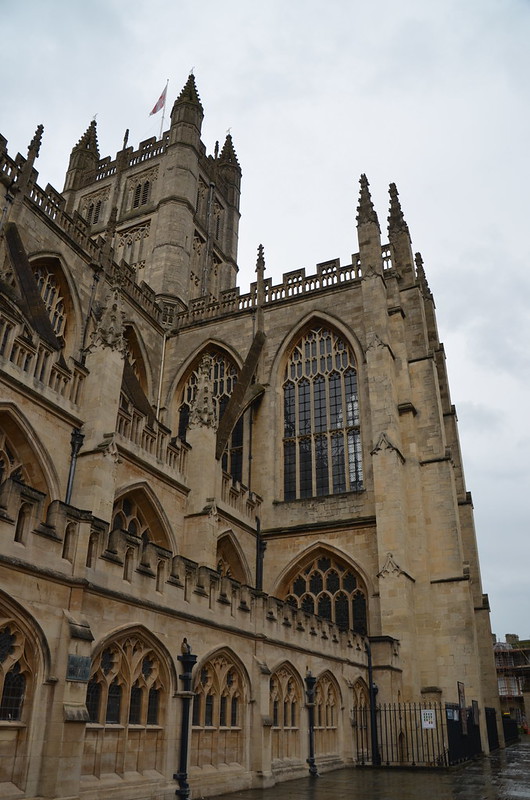
The exterior in the gray skies--it stopped raining for a few minutes. From the brochure I picked up at the entrance to Bath Abbey: Abbey or Cathedral? Bath Abbey is a parish church which was once the great church of a monastery. A cathedral is the principal church of a diocese, the area of a bishop's authority.
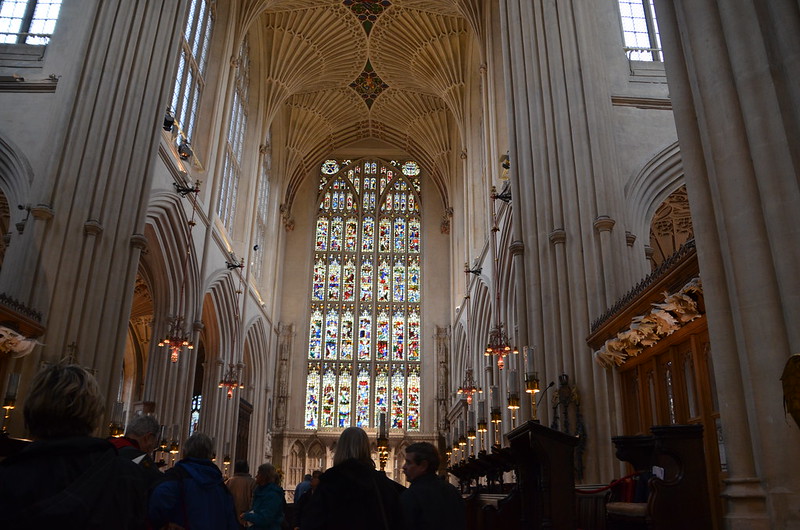
Look at the great window at the East End: you will see that it contains 56 scenes in the life of Jesus Christ.
The church is cruciform in plan, and is able to seat 1200. An active place of worship, with hundreds of congregation members and hundreds of thousands of visitors each year, it is used for religious services, secular civic ceremonies, concerts and lectures. The choir performs in the abbey and elsewhere. There is a heritage museum in the vaults.

Impressive, to say the least. Amazing to look at the delicacy evident in this design of the fan vault ceiling.
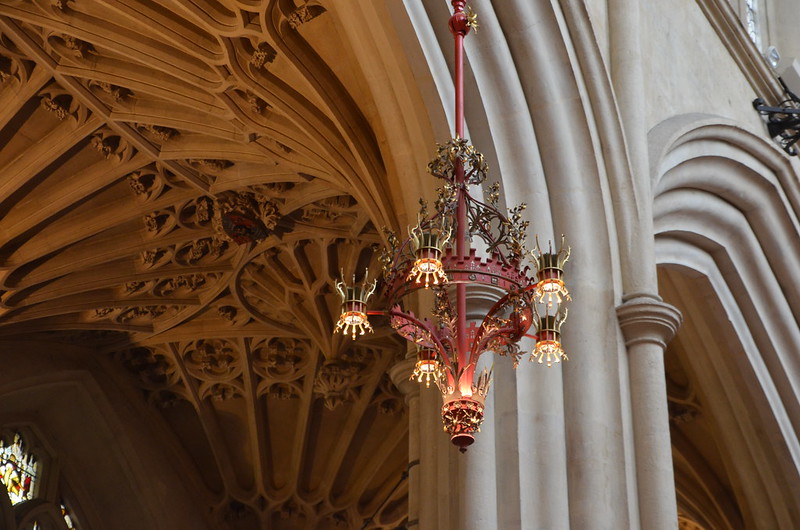
I couldn't find out anything about these light fixtures--isn't it lovely?
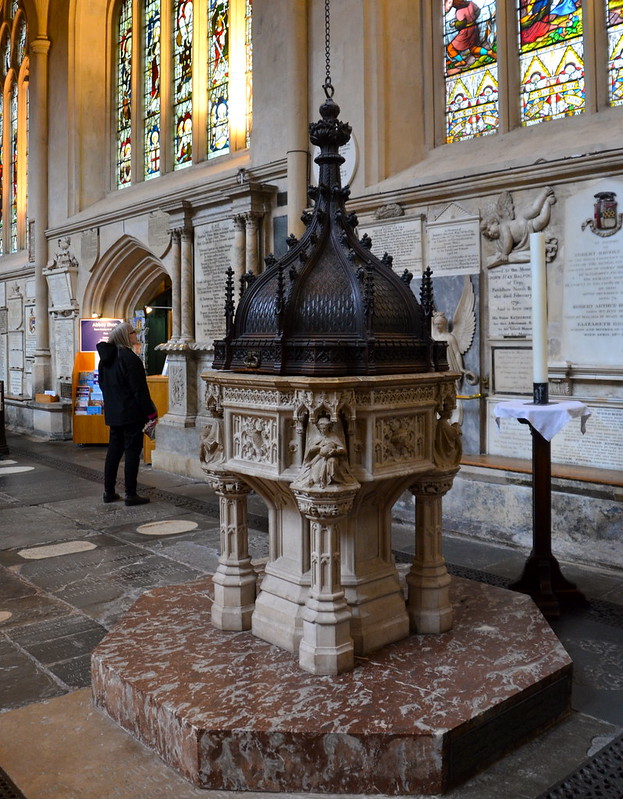
The Victorian font from 1874, according to the brochure. That cover is raised straight up for baptisms--see the chain from which it suspends.

The eagle lectern from which the Bible is read. You can see one side of the choir there beyond it.

The beautifully carved pulpit.
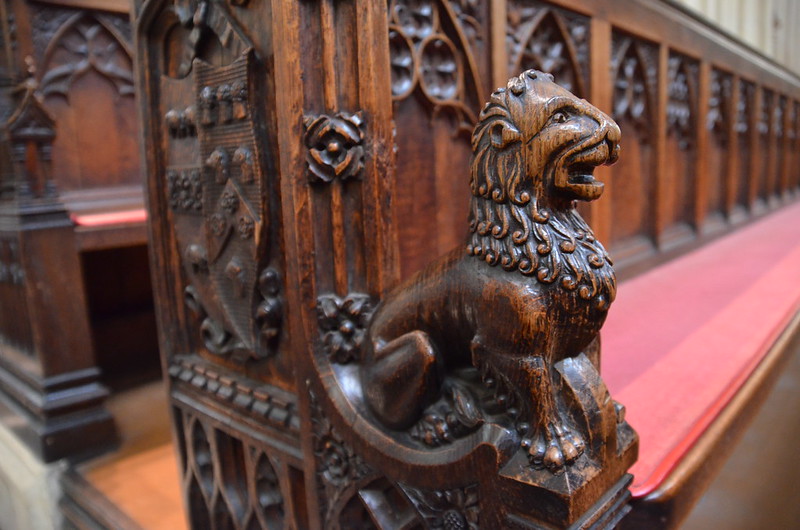
I also like this carved lion on the end of this pew. It's so beautiful.
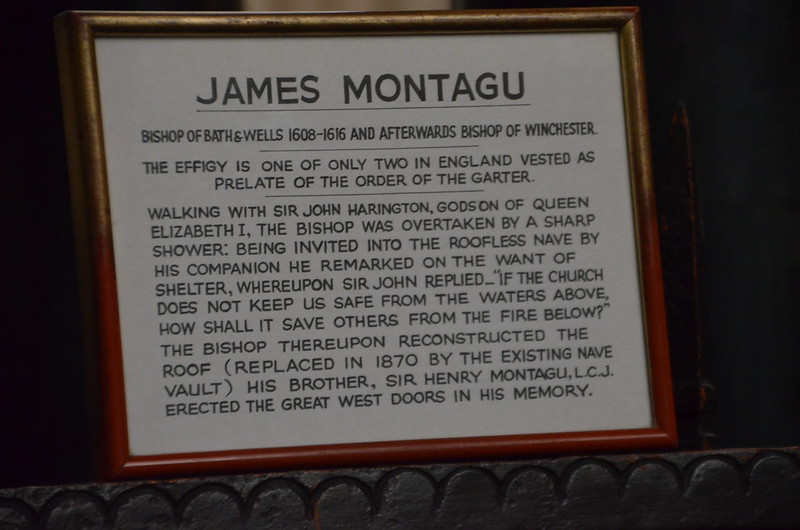
Here's some info for you about the man you see next photo.
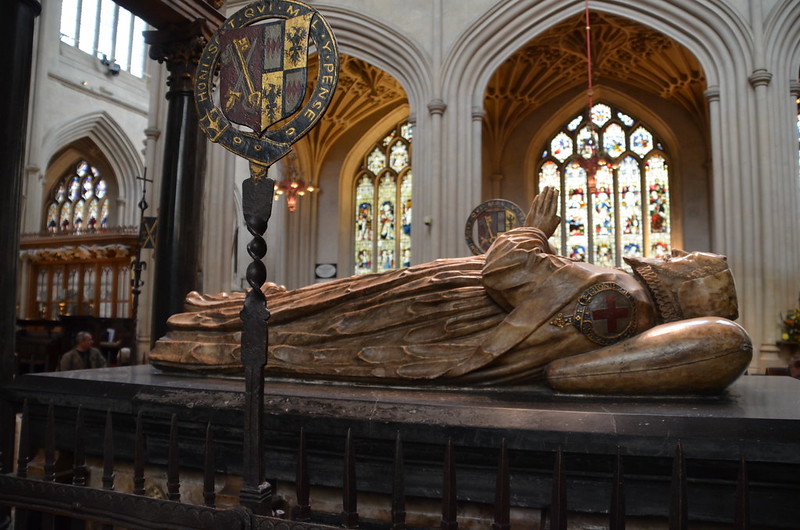
Montagu is buried in this alabaster tomb in Bath Abbey.
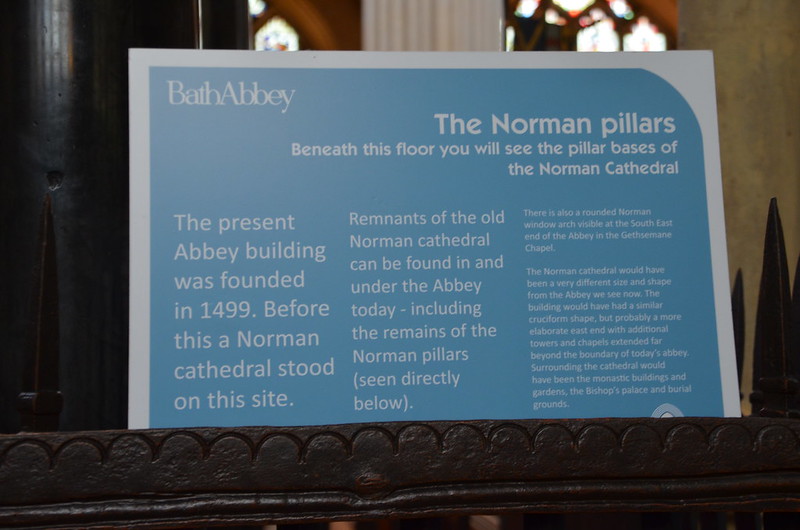
Info for the next photo.
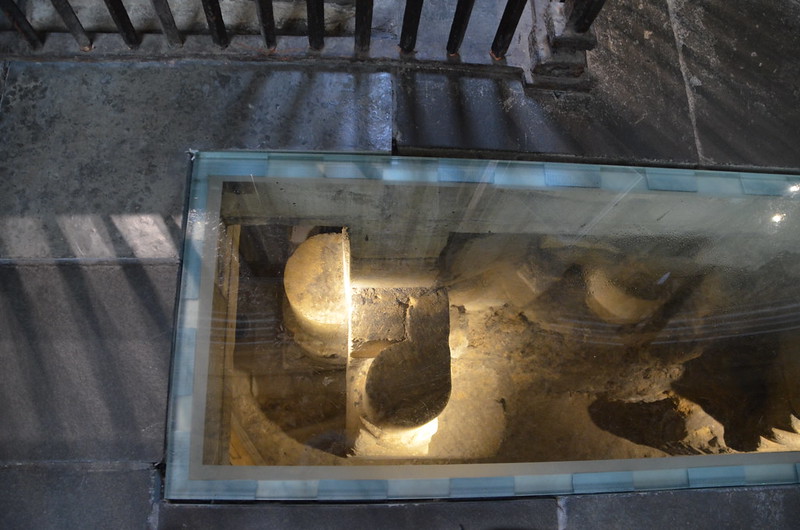
Very interesting to be able to see these ancient pillars. I read on the brochure timeline that in the 1090s Norman Bishop John de Villula transfers his throne from Wells to Bath where he founds his new cathedral. By 1499 the Norman cathedral was in ruins; the present Abbey church founded to replace it.

5 comments:
It is gorgeous Lynette! I only got to see the outside when I was there. Thanks for showing what the inside looks like.
What a beautiful church. Thank you for sharing it.
Magnificent shots, and such an exquisitely beautiful sanctuary and church.
Nice photos. The photo of the fan vault is particularly good. Look up!
When I went there, I liked the Roman Baths and the Royal crescent, too, but now I regret not entering the Abbey.
Post a Comment